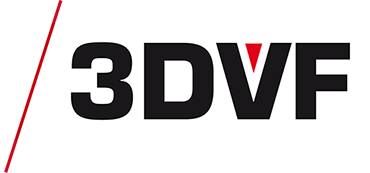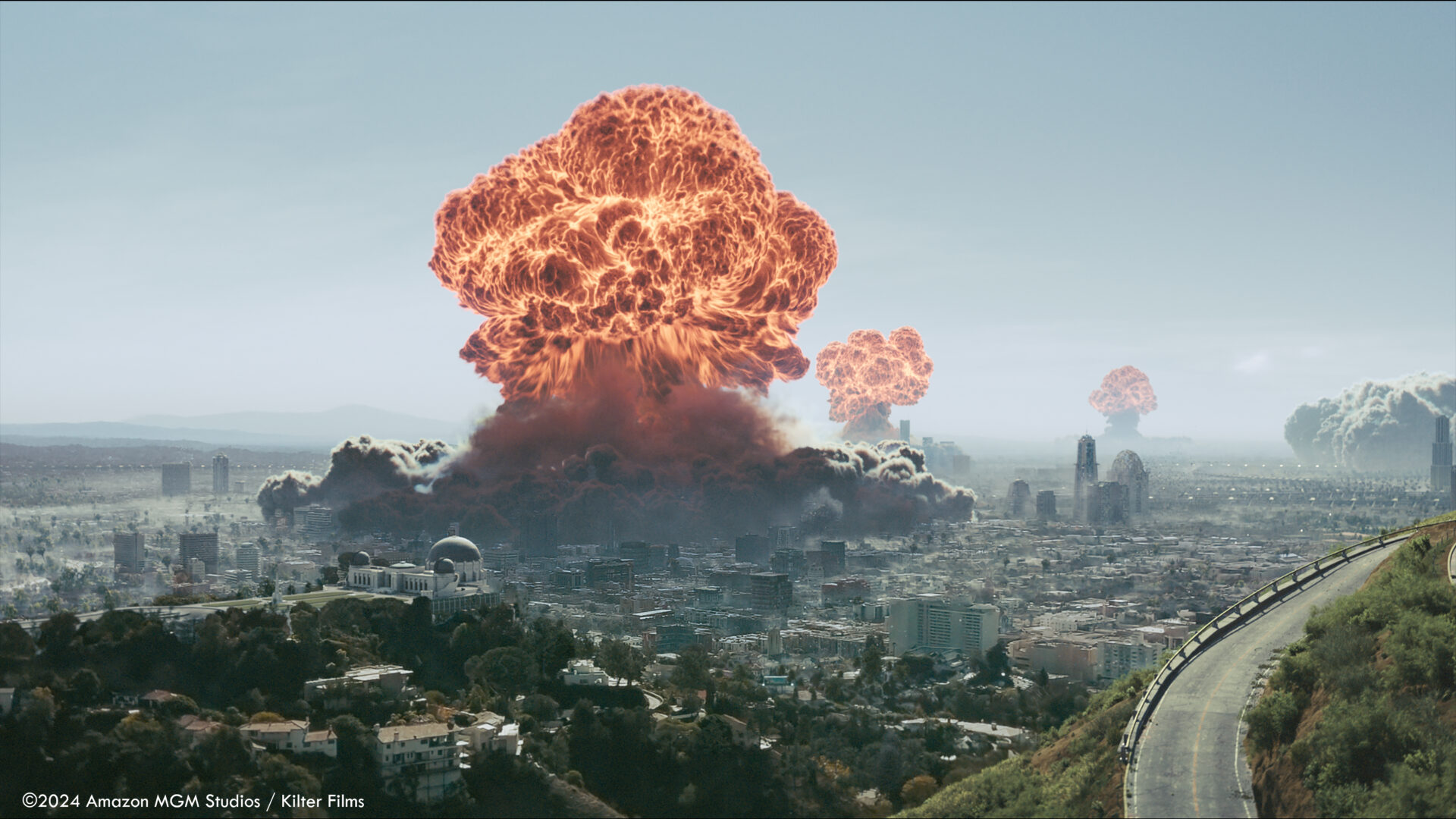This article is also available in:
Français
Fallout, adapted from the popular video game franchise, blends post-apocalyptic settings, retrofuturism, and humor. The series is available on Amazon Prime.
RISE Visual effects supervisor Andreas Giesen (we previously interviewed RISE about their work on Reminiscence, Matrix Resurrections) answered our questions on Fallout‘s environments, nuclear explosions, and the Brotherhood of Steel with its armors and vehicles.
The studio also shared with us numerous pictures showcasing their work!
3DVF: Andreas, you already worked with Fallout executive producer & director Jonathan Nolan, as well as production VFX supervisor Jay Worth, on Westworld and Reminiscence: is that why RISE was chosen to create environments, as well as many VFX related to the Brotherhood of Steel?
Andreas Giesen – RISE: Yes, for Reminiscence we built a massive city environment which was half-sunken, also a dystopian version of a huge city.
So we were quite excited that we could create another vast, post-apocalyptic city and also honored that Jay Worth and Andrea Knoll trusted us with way more sequences and tasks, like the vertbird, the powerarmor, other big extensions like the Griffith Observatory and many effects heavy shots.
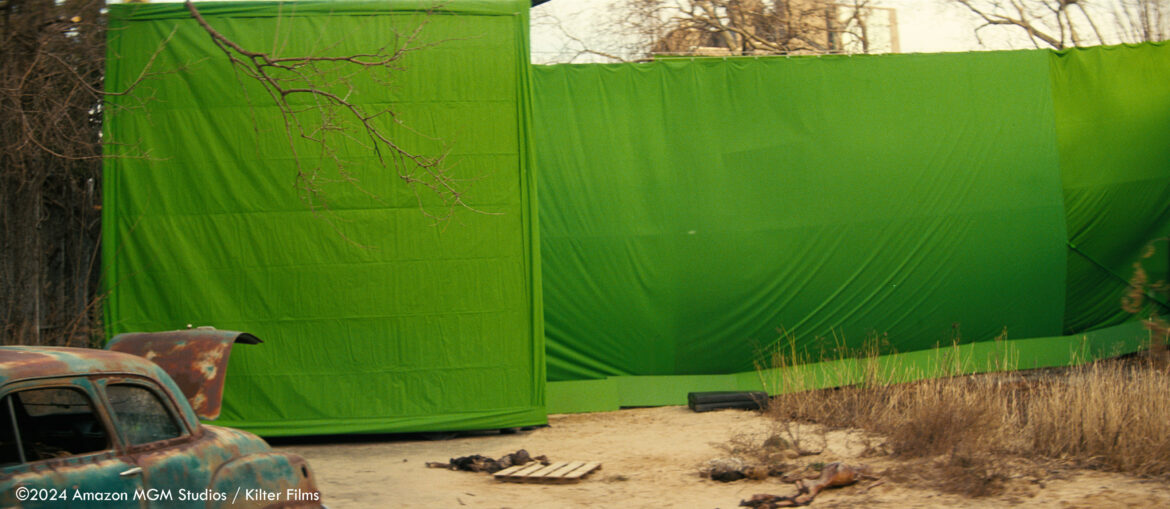
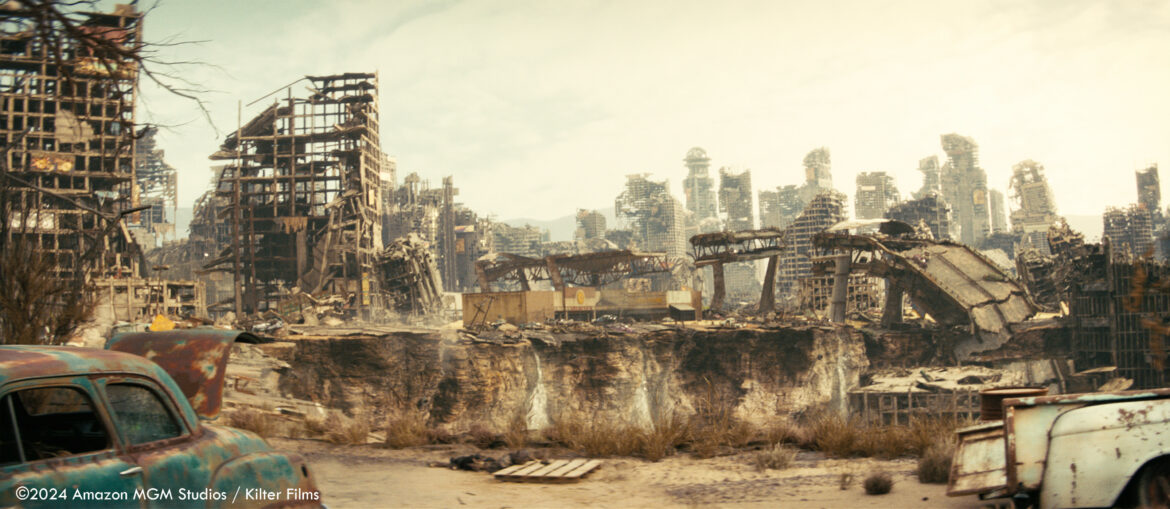
3DVF: Fallout features a blend of realistic elements, such as post-apocalyptic environments, as well as non-realistic ones (creatures, armors, etc). Can you tell us more about the creative process? Was is difficult, when discussing your work with Jay Worth, Jonathan Nolan, showrunners Graham Wagner and Geneva Robertson-Dworet, to find a path that would achieve their vision, while also creating a world that feels cohesive and consistent? How did the team decide when to stay realistic and when not to? When to stick to the look and feel of the game and when to steer away from it?
To get started with the creative process we ordered a bunch of artbooks and discussed about the different games in our team, as we several have with fanboys and girls. I played Fallout 4 as a sniper a lot, but we also had artist in the team that even started with the first Fallout in 1997.
And for sure the team on client side started with this process already month earlier and in the first call it took not even 5 minutes to notice that they were all really into it, which was so great. The idea was to stay true to the whole look and feel of the game, while telling a unique story.
Jonathan Nolan and Jay Worth had such a clear vision, and when we discussed our tasks with Jay, he gave us guidance on all the different aspects of our sequences. But we were still allowed to explore creatively, and Jay was more than happy to discuss and refine those ideas with us until they felt right for the Fallout universe. I think that’s why the show was so enjoyable for me and the whole team, because it was such a trusting and creative working relationship.
3DVF: One of the main challenges tackled by the team to create Fallout season 1 was the creation of Los Angeles, and the destruction sequence. Let’s focus on the city itself. How did you approach such a vast environment? why did you choose to go full CG? What kind of references did you use, and what was your workflow?
We decided early on to go full CG because we knew that several nuclear bombs would explode in the city and destroy parts of it. To ensure a seamless integration with all the effect layers throughout the scenes, we built it in CG from scratch.
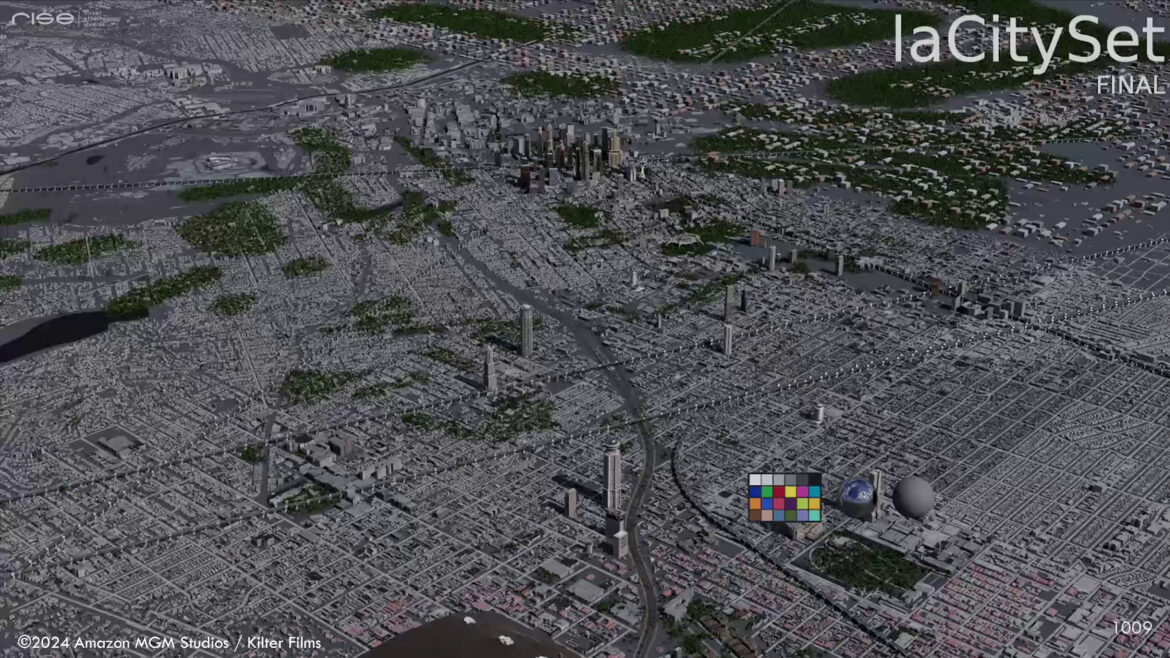
For the specific look of the retro-futuristic city of LA, we received a great concept piece from production and collected hundreds of references ourselves.
Our Asset-Team, led by our CG supervisor Jenny Leupold, started to create landmarks and buildings that are iconic to the city of LA and added a retro-futuristic touch to them, like the LAX airport or the city hall.
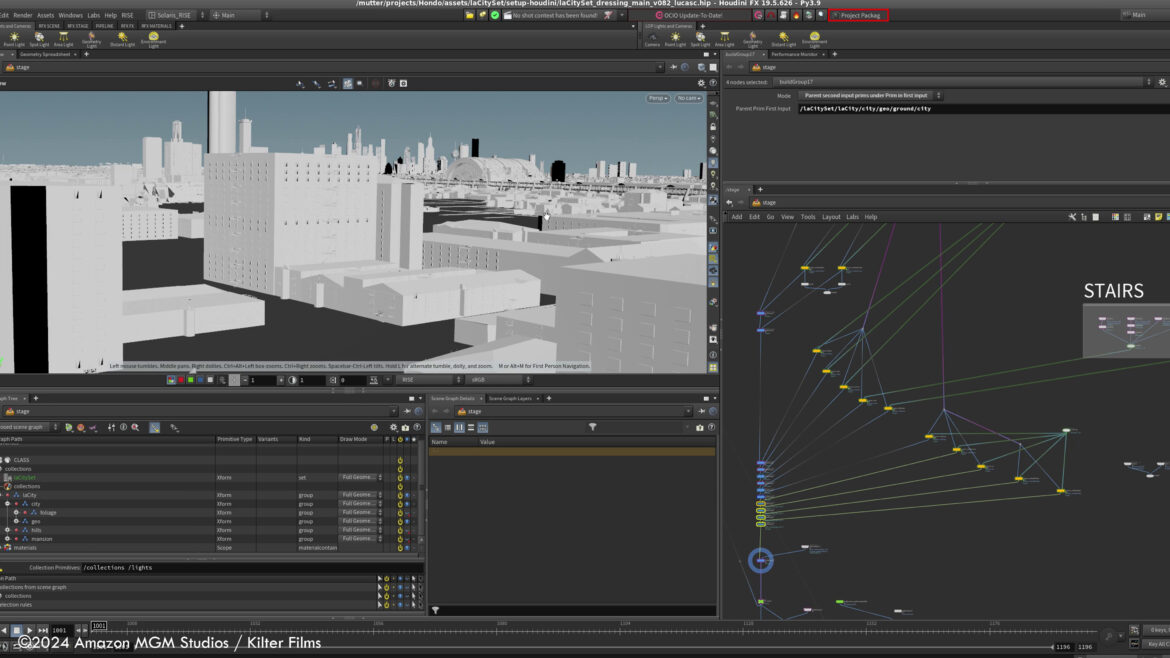
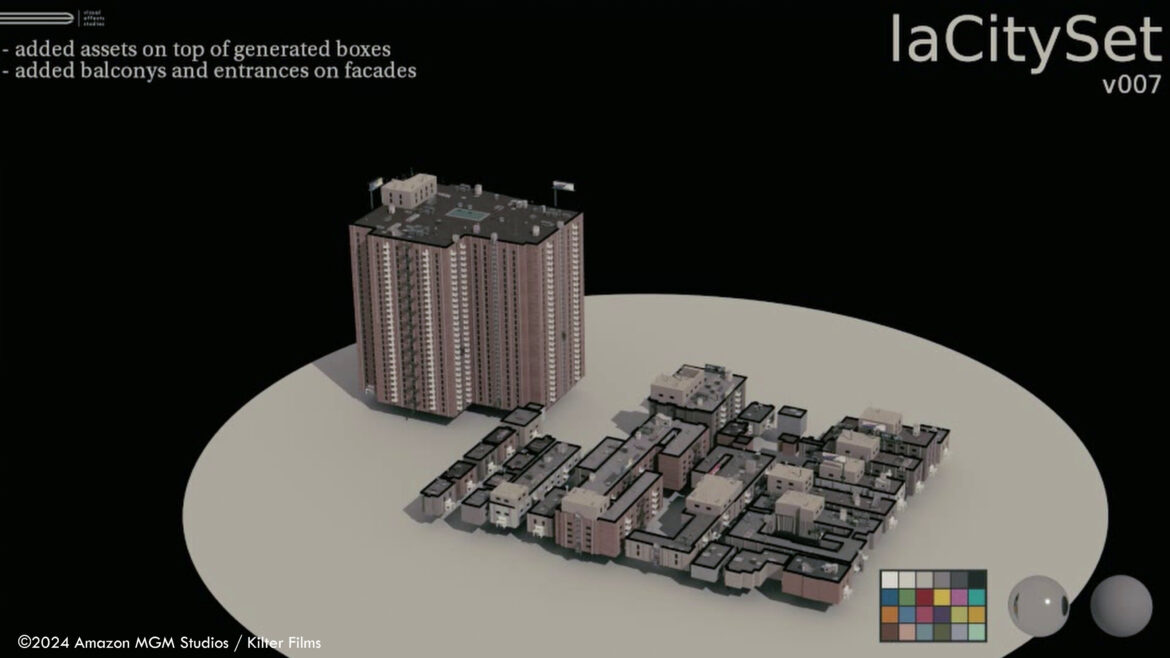
For the vast city area we extracted the real topography of LA from online mapping tools. But the “buildings” were just simple cubes, so we used procedural techniques in Houdini to add lots of details: windows, balconies, fire escapes, and roof structures. We scattered these elements based on certain rules that we first tested on a single block of buildings and then refined until it looked real. Adding color variation based on the original buildings’ texture helped us create enough variation even with about 30 elements.
Another topic was the scale of downtown. As our point of view of located in the Hollywood Hills we are actually quite far away from the city center, so with a real scale we would loose the iconic downtown silhouette too much.
If we’d just scaled up those existing buildings, it would have ruined the whole look of the city. Those buildings would have had much bigger windows than the ones we wanted to be in shot. So we came up with the idea of recreating the iconic downtown LA skyline with new buildings that are taller and look a bit retro-futuristic. That way, everyone will know that it’s LA and still see the great distance due to the correctly scaled details.
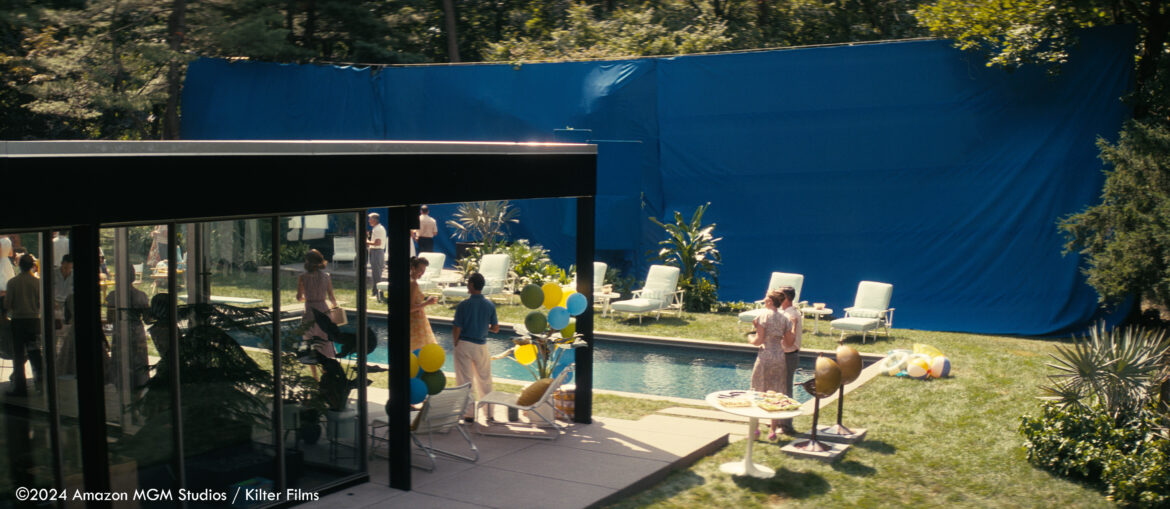
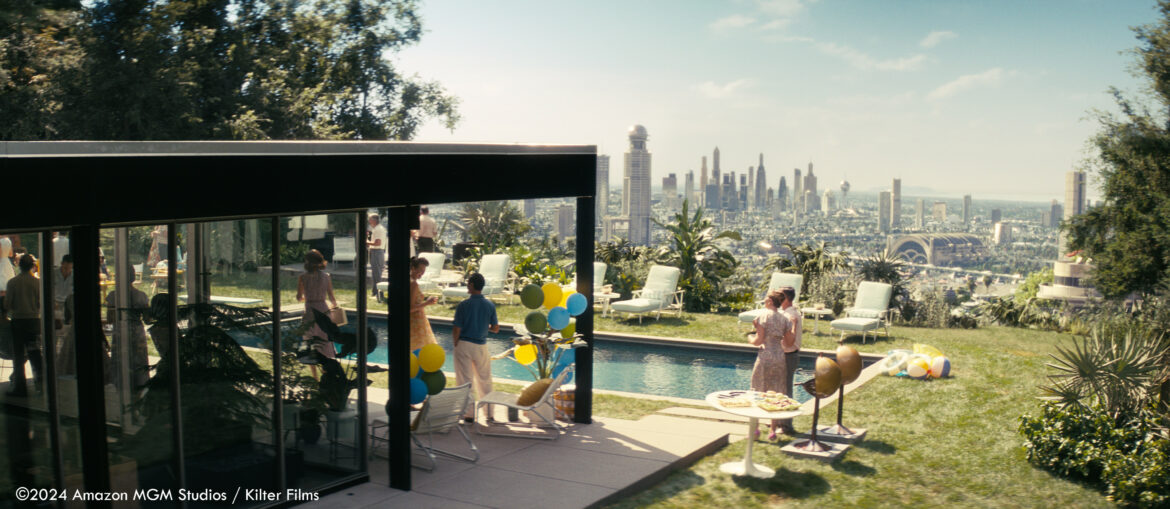
3DVF : The atomic explosions are a key sequence of Fallout season 1. What artistic and technical challenges did you overcome to create these memorable mushroom clouds?
This LA bomb sequence was probably the most challenging one of the whole project. We had to recreate the city of LA as a CG version as described above and for the explosion and destruction our FX Team, supervised by Kristian Kück had to deal with massive, large-scale simulations.
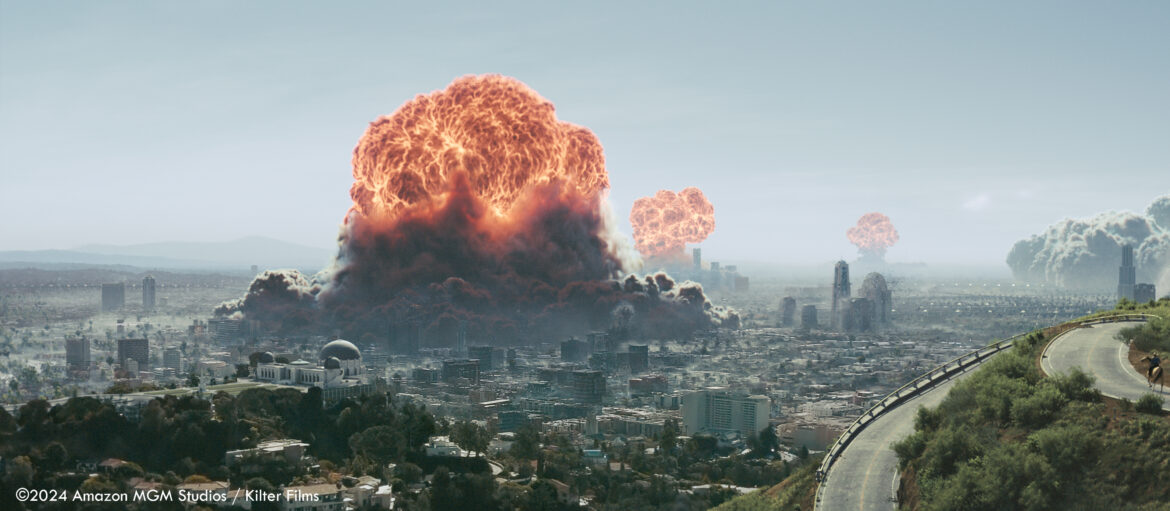
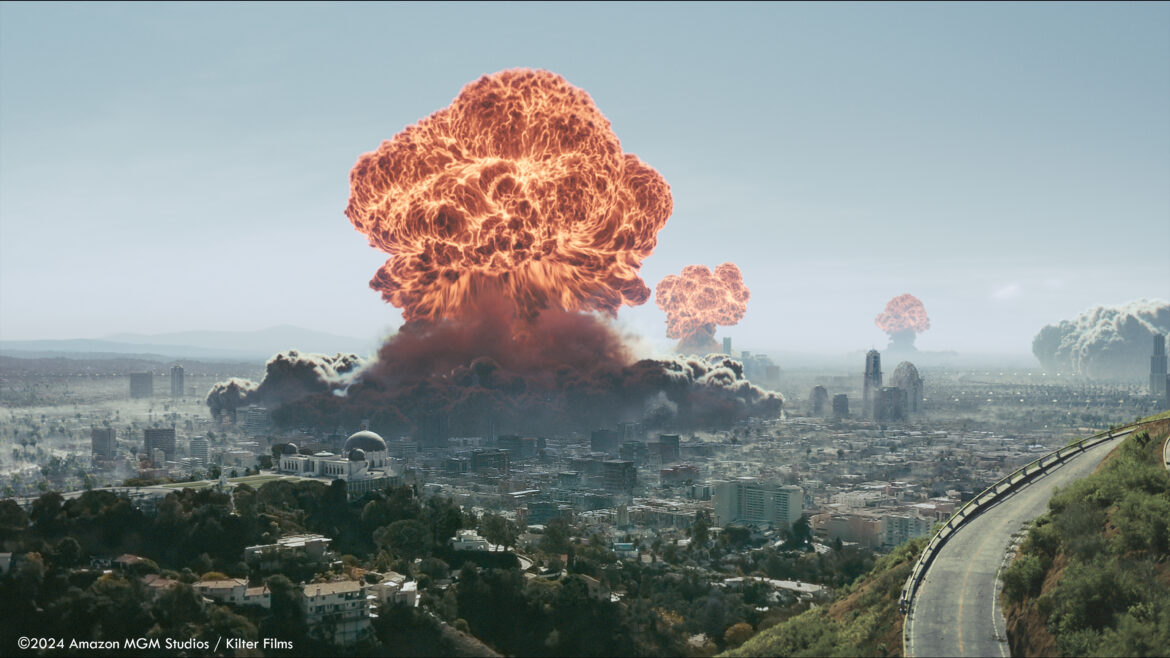
Starting to explain the trickiest part, the look of the main mushroom cloud. We searched for reference videos online and you will find several ones, including the typical mushroom look, but director Jonathan Nolan had a slightly different idea. In the first shots, when the little girl looks at the explosion, you should be unsure if it is a nuclear explosion or just a big puff of smoke from a fire.
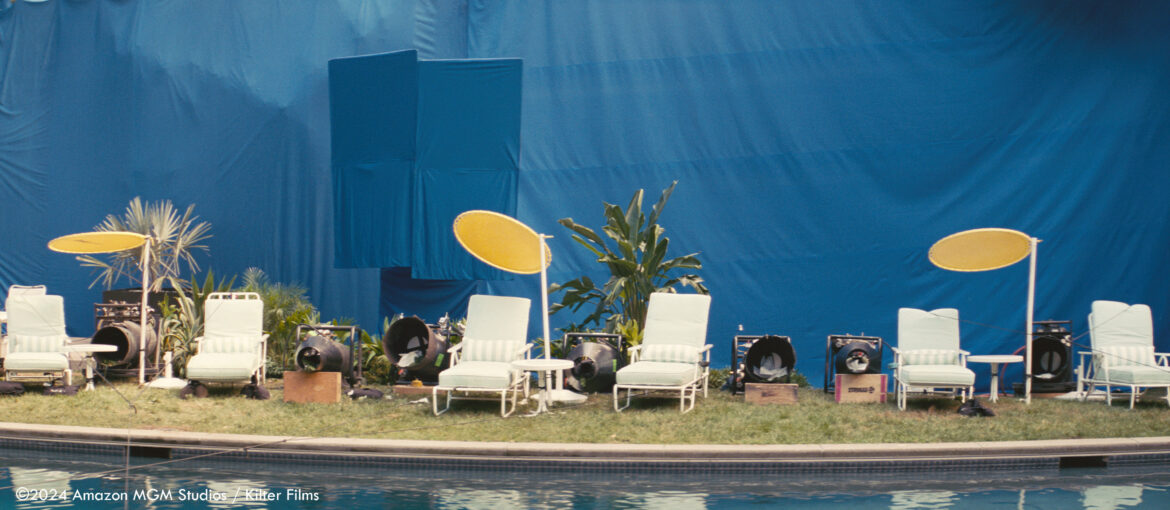
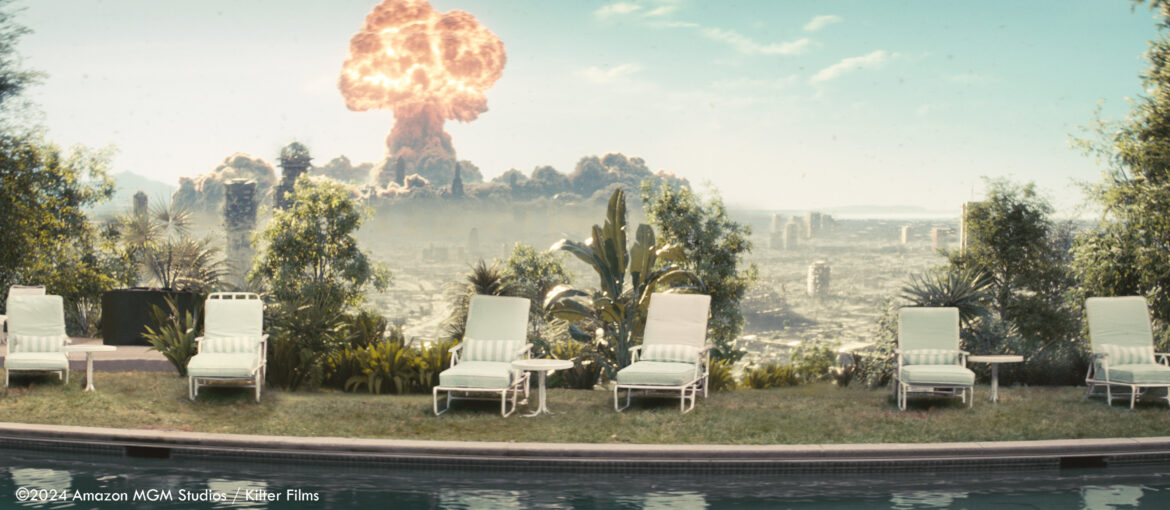
When you look at those references, you can see the mushroom cloud pretty much immediately after the initial explosion. We had to find a way to make it look like it was coming out of the smoke, which was a real challenge for our FX team. We didn’t want the two layers inside each other.
Ultimately, we had to find a way to balance the different velocities in the simulations so that the mushroom cloud rising later would slowly influence the other smoke without the scale suffering from too fast advection.
Another artistic choice was the speed of the mushroom rising. In the references, it rises more slowly, but since there were only a few shots to tell the story, especially in the last shot of the sequences, we had to make them faster than in reality.
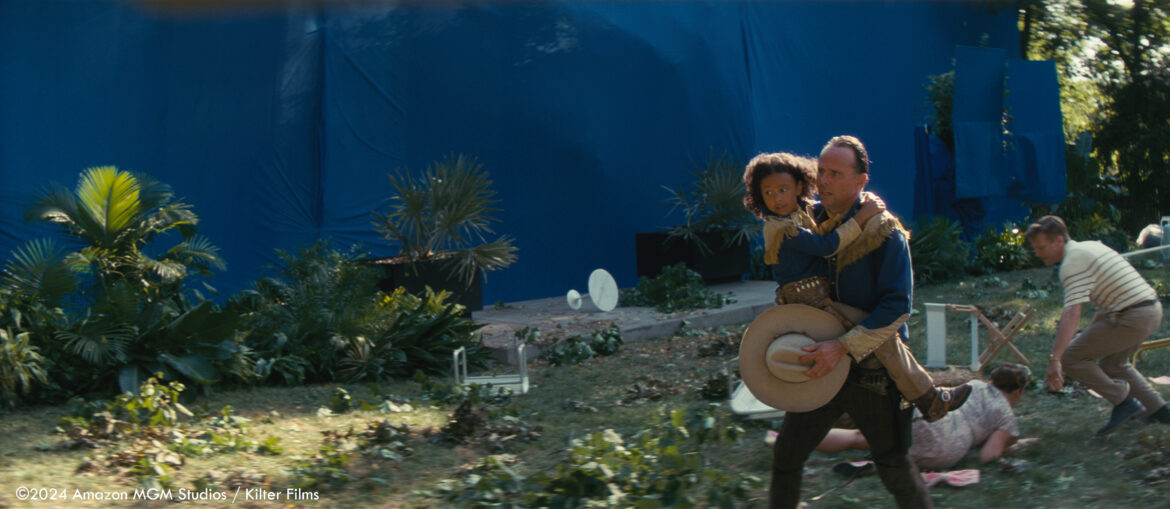
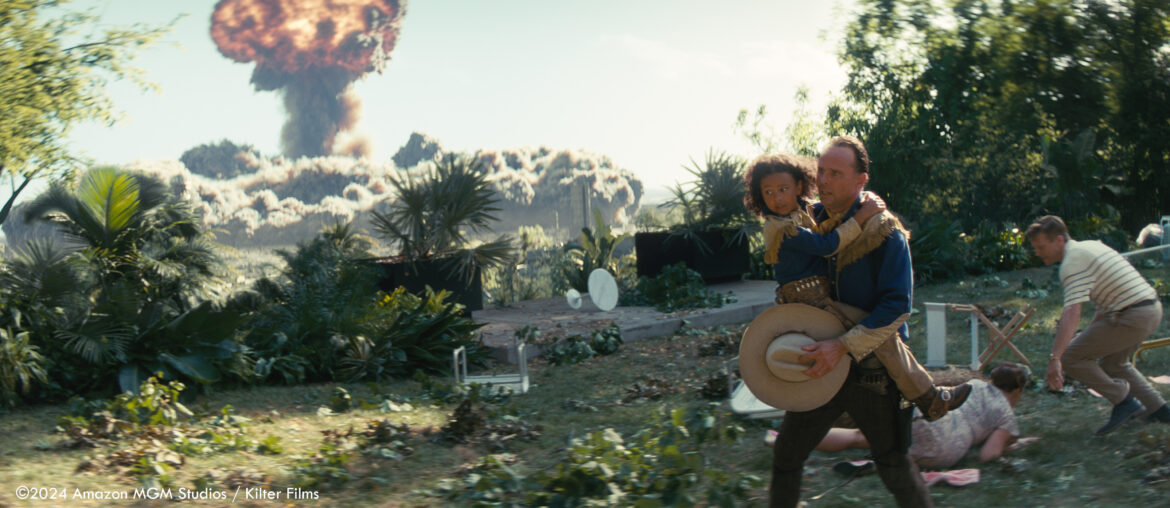
In parallel to the look development of the main explosion we created a low-res simulation to block out the timing and placement. Thanks to our USD pipeline, we were able to make those adjustments for each shot in the principle FX scene by moving a large cache. The timing and placement is then “pushed” from this Houdini scene so that the lighting artist is automatically working with the current version based on which shot they are looking at in their principle-lighting scene.
We also had to simulate a ton of layers for each of the four explosions in the final shot. The explosion itself had already several ones, but we also had to deal with collapsing buildings, dust, shockwaves, shattering windows, and vegetation in the city and in the foreground.
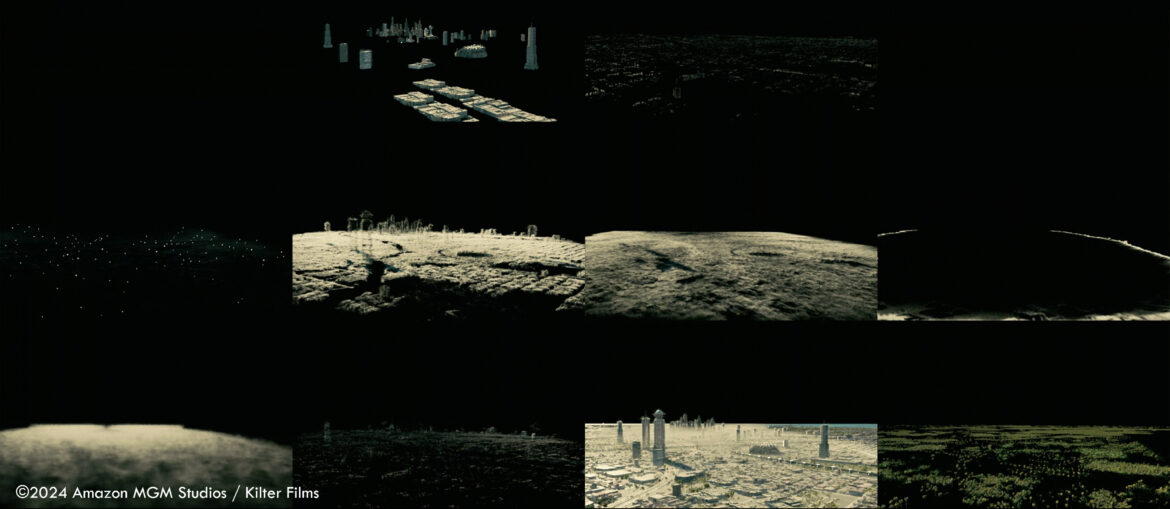
3DVF: You also worked on the New Vegas post-apocalyptic environments. Which elements were the most difficult to create, and why?
The biggest challenge in nearly all the environments was to sell this enormous scale of the wastelands, especially in the New Vegas shot, as we do not have any midground elements that help to understand the distance.
Once we had the basic layout with the mountains and the city, the key was to use enough elements that had a clear scale that everyone knew. For example, we scattered thousands of damaged cars along the streets or streetlights. We also added gas stations and other buildings that are clearly not gigantic. Because just looking at mountains or other terrain features, it is very hard to judge the scale. Of course, the depth layering with all the haze elements was no less important, and our compositing team, supervised by Jonathan Heine, took this shot to another level of realism.
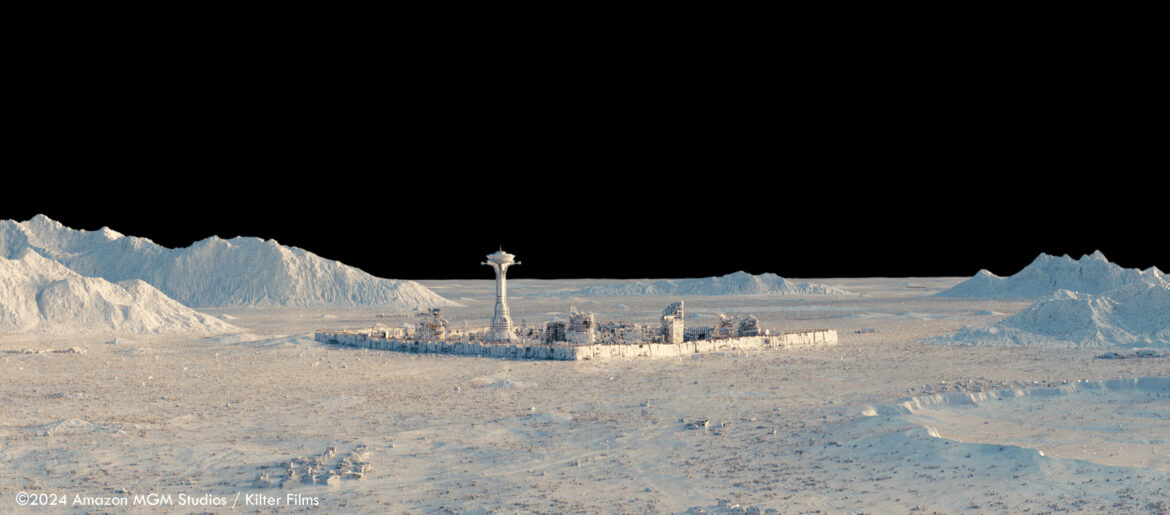
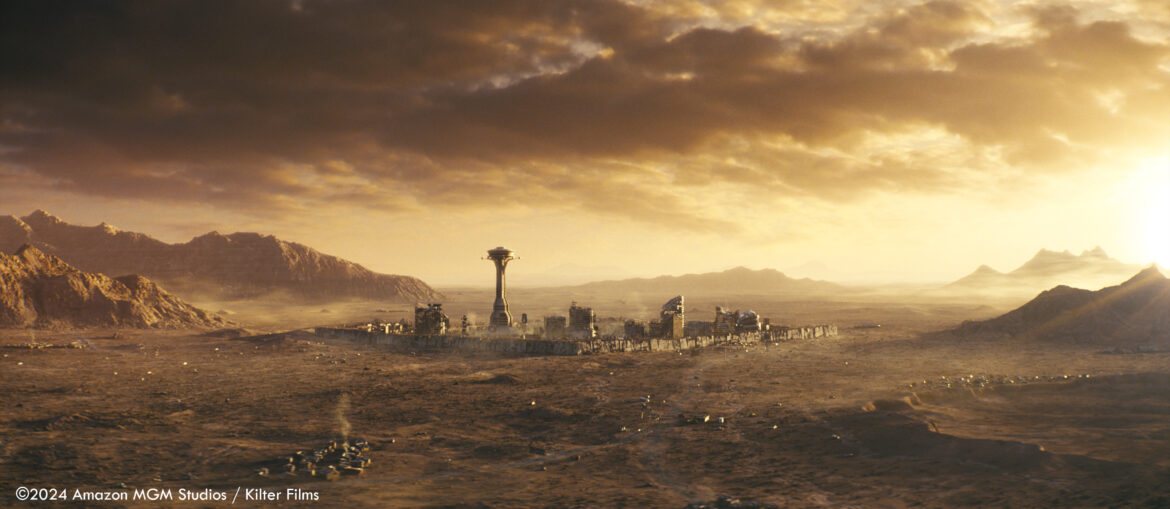
To create the terrain with all the details we used the heightfield tools in Houdini. But as its such a wide landscape, we had to split the heightfield into about 10 different chunks to get enough detail for the foreground. Since we knew there would only be one camera position for this shot, the resolution of the foreground heightfield chunks was much higher than the background ones. The mountains were then separate heightfields that we could move individually to be able to address any feedback without going back to the main heightfield.
3DVF: Landmarks are a key part of Los Angeles and New Vegas. They help ground the environments, and the series as a whole seems more “real”. Can you walk us through this part of your work?
Yes, those real landmarks were key to help the audience understand where the characters were at that moment. That’s why we talked about it a lot with Jay to make sure we had enough landmarks in each location, like all the iconic buildings in Los Angeles, Randy’s Donuts or the Santa Monica Pier in the shots when Lucy leaves the vault for the first time. Another is the destroyed version of the Griffith Observatory in the last episode.
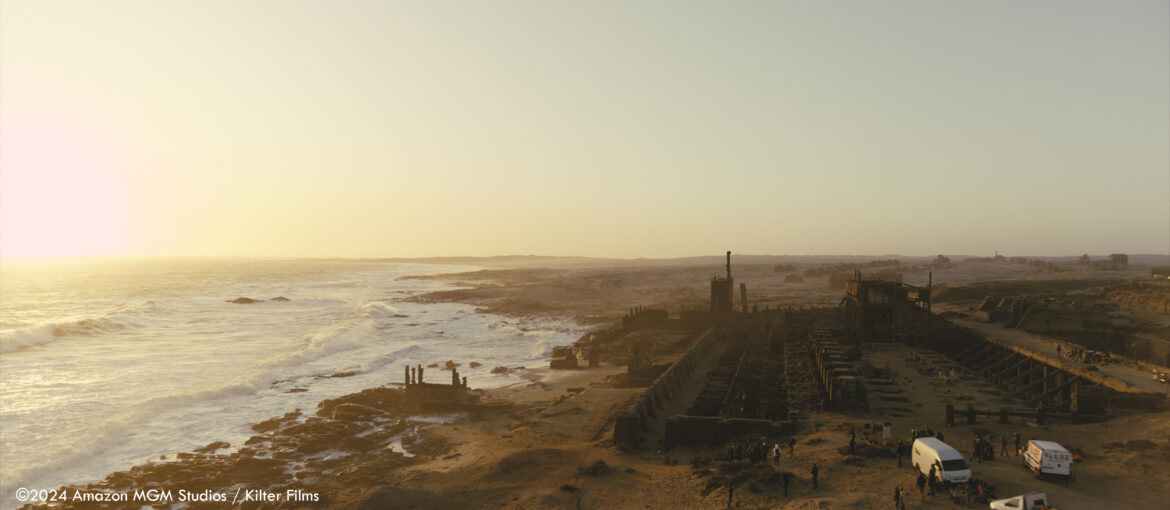
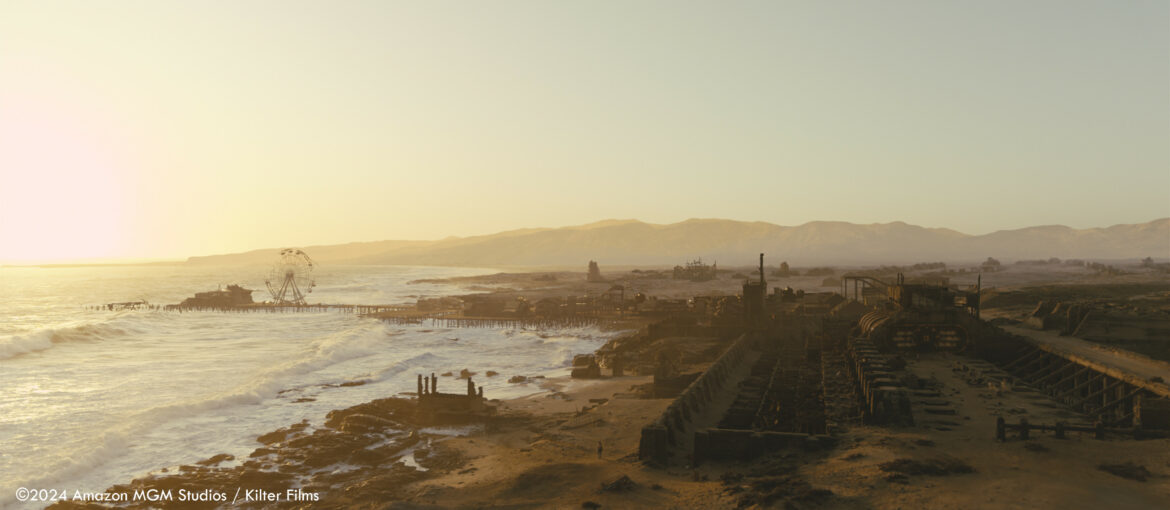
But not all of these landmarks or buildings were taken from real locations, we also added several based on the game so that the audience familiar with the games would immediately recognize them. For example, the city of Shady Sands or New Vegas.
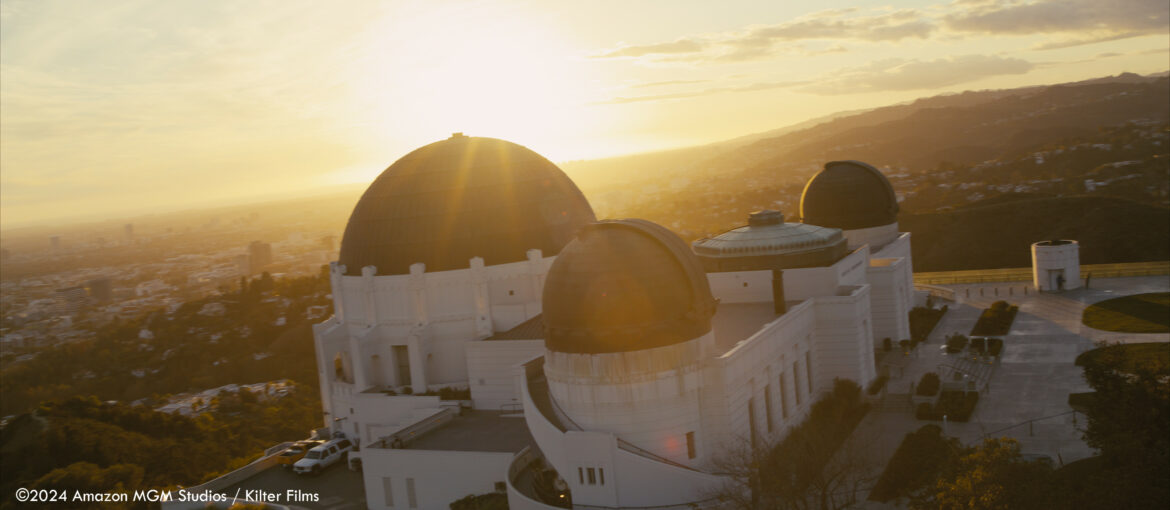
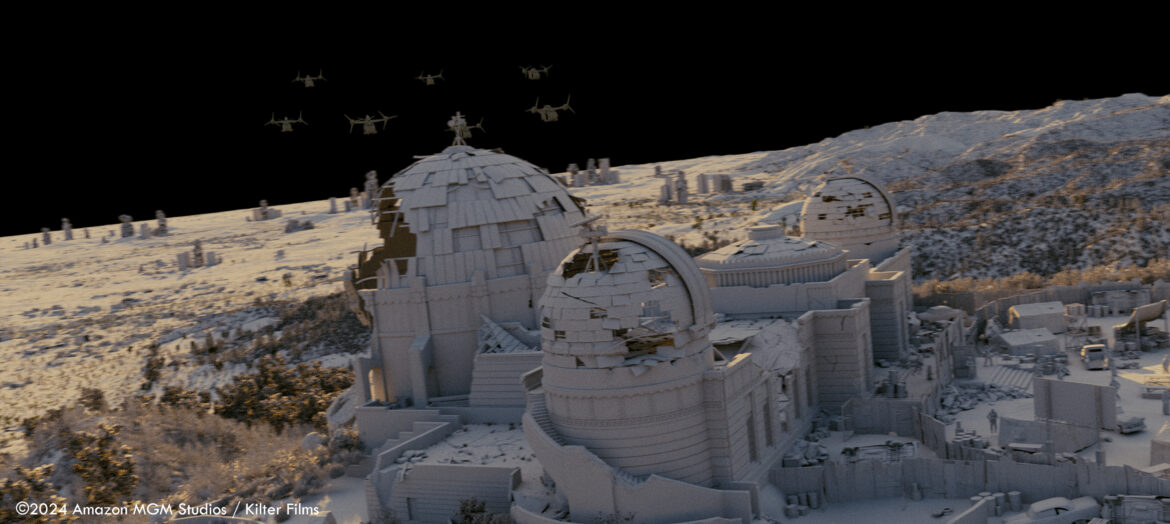
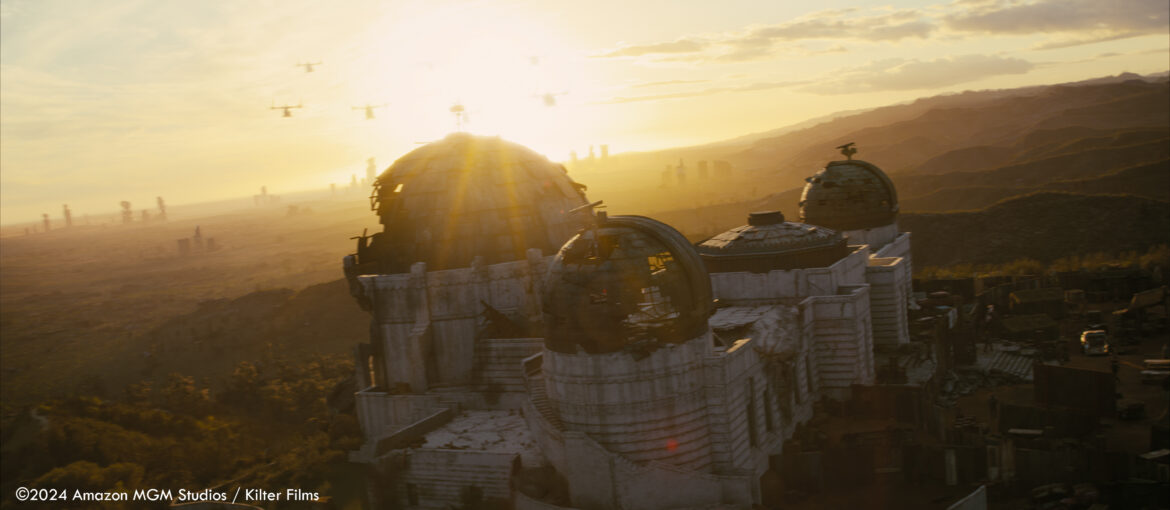
3DVF: Legacy Effects created a practical armor for the Brotherhood of Steel, but RISE did create a few CG replacements, for example for flying sequences. Was it difficult to create believable flight sequences, while still keeping this idea of a very heavy armor?
They had a stuntman on the set with a jetpack on his arms flying through the air. It was a little unconventional, but it helped us a lot for the animation, and some of the dust and leaves that were kicked up are in the final shots. Integrating the CG armour made this approach a little more difficult, but the benefits outweighed the drawbacks.
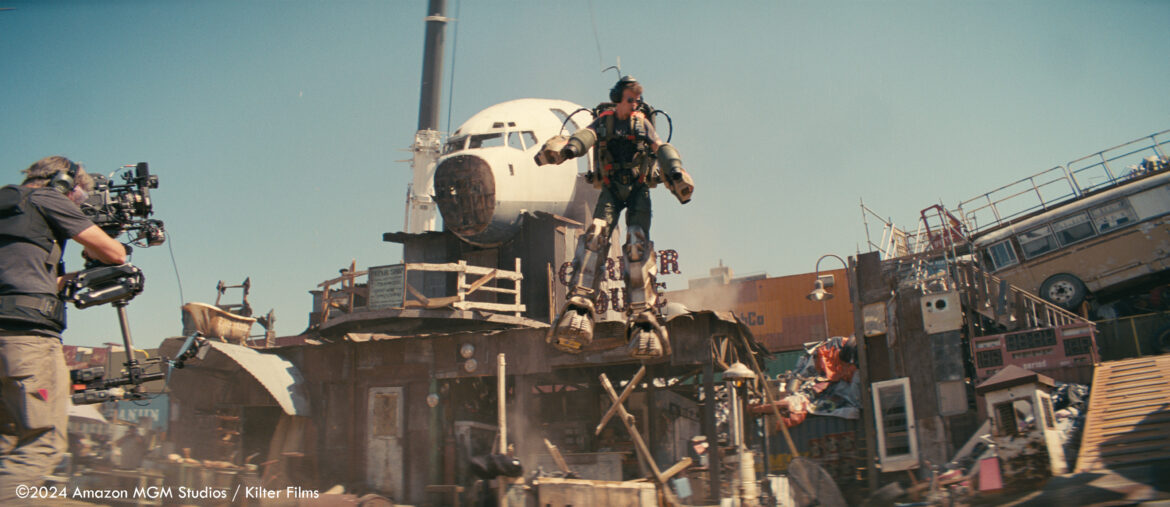
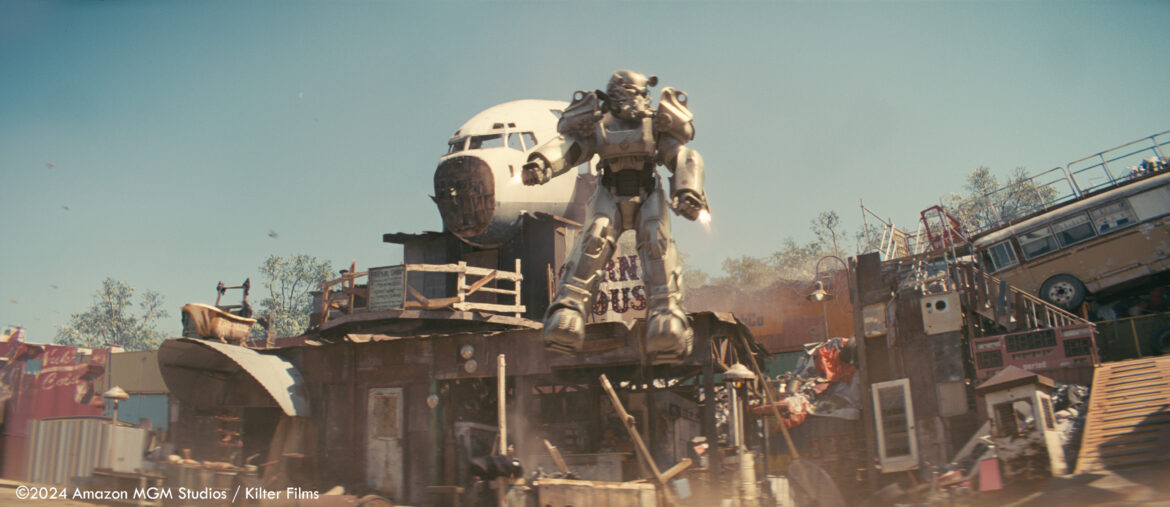
For other scenes, we did motion capture sessions with our Xsense suits. This was the case when the power armor was just walking around. The shots in Filly where the armor malfunctions were trickier. Clearly not all shots in this sequence had the jetpack guy as a reference, so we relied on classic keyframe animation instead.
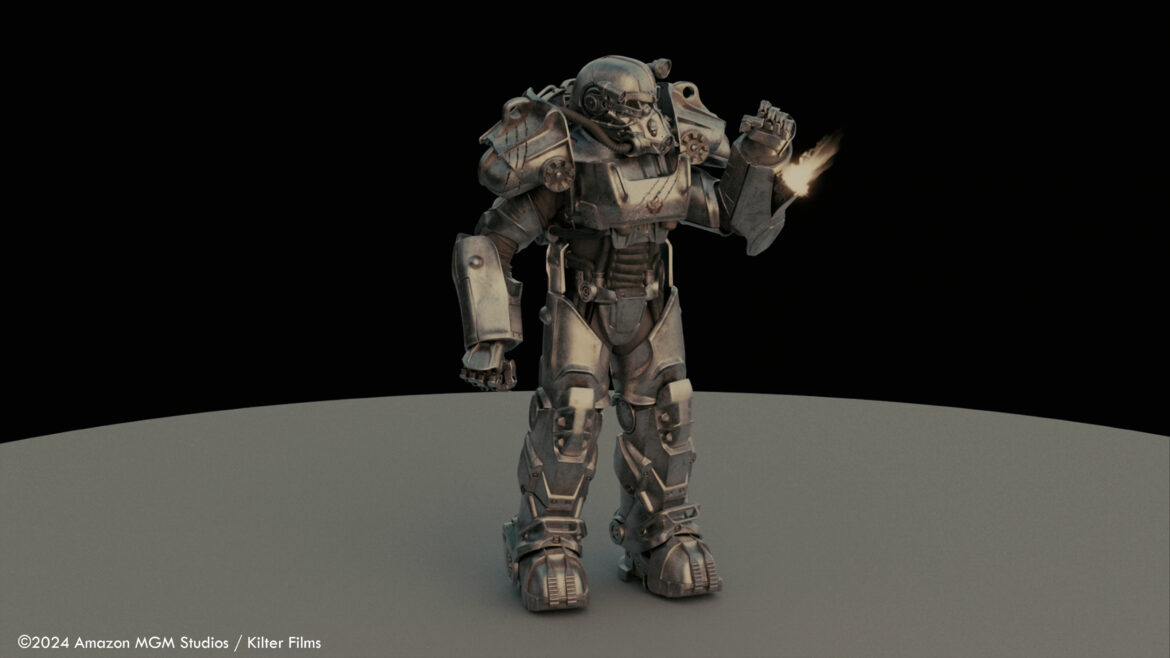
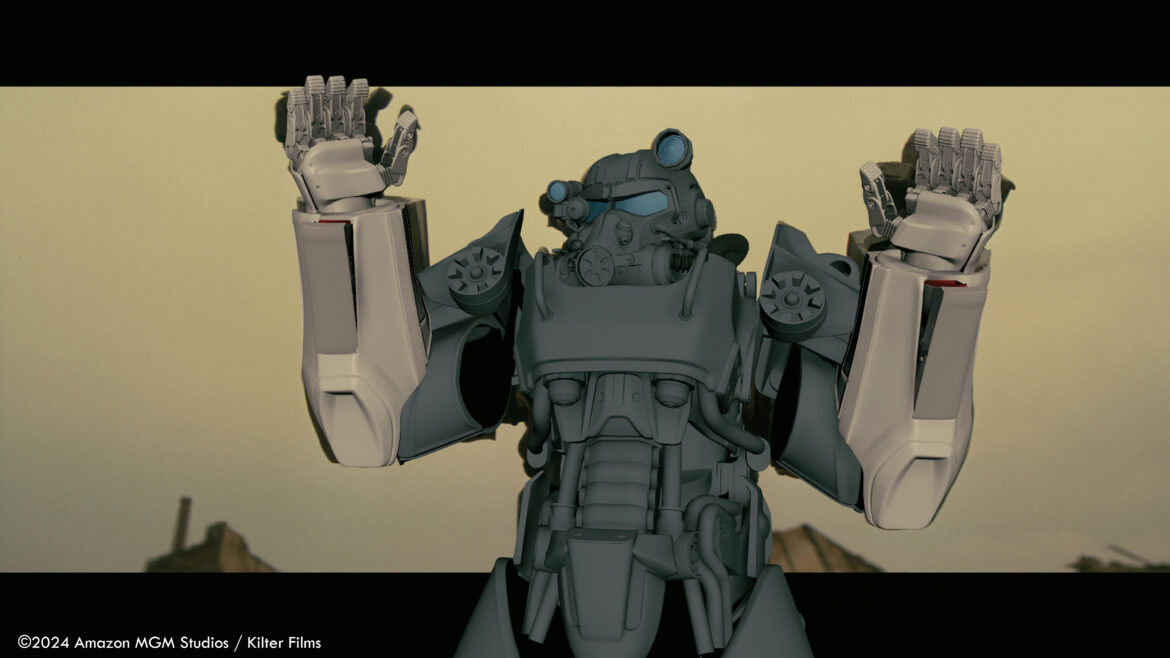
3DVF: You worked on the Vertibirds and Dirigible, two kinds of flying machines used by the Brotherhood of Steel, well known by Fallout fans. Can you tell us more about their design, modeling/surfacing, rigging and animation?
For both of these iconic Fallout vehicles, we received the low-res game model and concept art from production to get us started. Since the Vertibird was also partially built on the set, we were able to use the partially lidar scan and many texture reference photos for our complete version.
Second part of the interview on the next page.
